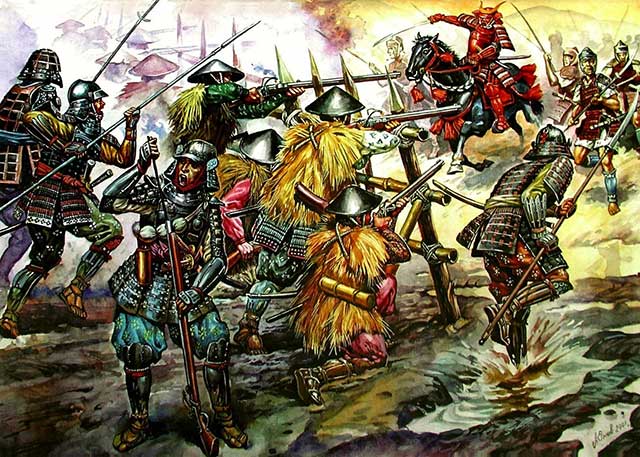
The Battle of Azukizaka, also known as the Battle of Bato-ga-hara, occurred in 1564, as Tokugawa Ieyasu aimed to quash the emerging threat of the Ikko-ikki, a coalition of monks, samurai, and peasants strongly opposed to samurai rule.
Tensions escalated in Mikawa province when the Ikko-ikki resisted samurai efforts to tax their temples. Conflict erupted in 1563 when Suganuma Sada, a vassal of Tokugawa, seized rice from Jogu-ji in Okazaki to feed his troops. In retaliation, the monks attacked Suganuma's castle and reclaimed the rice, barricading themselves at Jogu-ji. When Tokugawa sent envoys to investigate, they were executed. Another incident involved an Ikki attack on a merchant at a temple near Honsho-ji, leading to a failed raid by Tokugawa.
On January 15, 1564, the Battle of Azukizaka commenced. Tokugawa Ieyasu, intent on crushing the Ikko-ikki in Mikawa Province, sought aid from the warrior-monks of Daiju-ji Temple, with whom he had good relations. Among the Ikki ranks were Ieyasu's vassals, including Honda Masanobu, who sympathized with the Ikki cause. The battle was intense, with Tokugawa personally leading the charge, confronting enemy samurai on the front lines. Despite bullets piercing his armor, Tokugawa Ieyasu remained unwounded. His bravery swayed many samurai who had defected to the Ikki to switch sides, resulting in the Ikki's defeat.
However, the battle did not mark the end of Ikki resistance in Mikawa, prompting Tokugawa Ieyasu to continue his campaign to suppress Ikki rebellions in the province.
See also
-
The Siege of Hara Castle

The Shimabara Rebellion of 1637–1638, which culminated in the siege of Hara Castle, was the last major uprising of the Edo period and had serious political consequences.
-
Battle of Tennoji
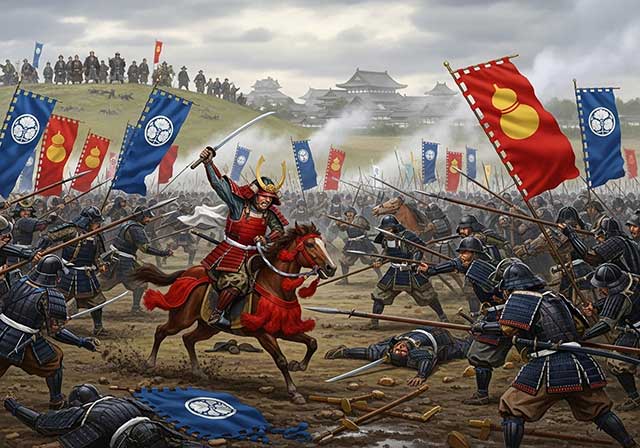
The confrontation between Tokugawa Ieyasu and Toyotomi Hideyori during the “Osaka Winter Campaign” ended with the signing of a peace treaty. On January 22, 1615, the day after the treaty was signed, Ieyasu pretended to disband his army. In reality, this meant that the Shimazu forces withdrew to the nearest port. On the same day, almost the entire Tokugawa army began filling in the outer moat.
-
Siege of Shuri Castle
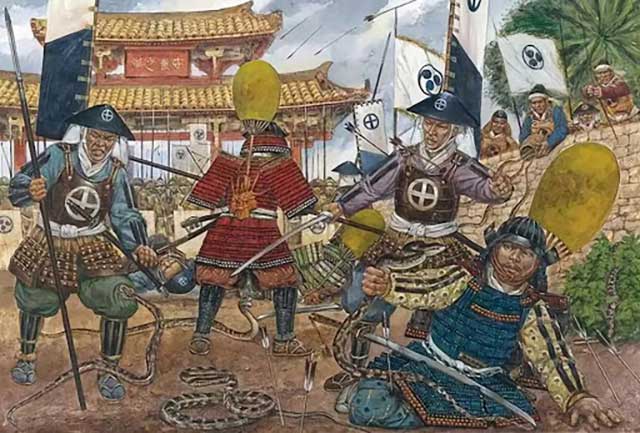
The Ryukyu Kingdom was established in 1429 on Okinawa, the largest island of the Ryukyu (Nansei) archipelago, as a result of the military unification of three rival kingdoms. In the following years, the state's control spread to all the islands of the archipelago.
-
The Siege of Fushimi Castle
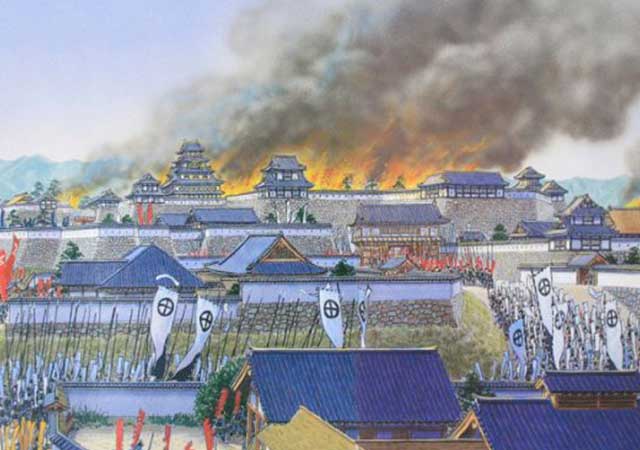
Fushimi can perhaps be considered one of the most “unfortunate” castles of the Sengoku Jidai period. The original castle was built by Toyotomi Hideyoshi in the southeast of Kyoto in 1594 as his residence in the imperial city.
-
The Siege of Otsu Castle
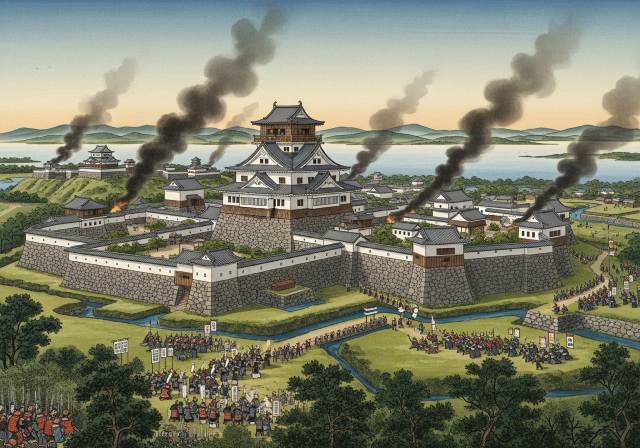
The siege of Otsu Castle was part of the Sekigahara campaign, during which the so-called Eastern Coalition, led by Tokugawa Ieyasu, fought against the Western Coalition, led by Ishida Mitsunari. Otsu Castle was built in 1586 by order of Toyotomi Hideyoshi near the capital Kyoto, on the site of the dismantled Sakamoto Castle. It belonged to the type of “water castles” — mizujō — as one side of it faced Japan's largest lake, Lake Biwa, and it was surrounded by a system of moats filled with lake water, which made the fortress resemble an island.
-
The Siege of Shiroishi Castle
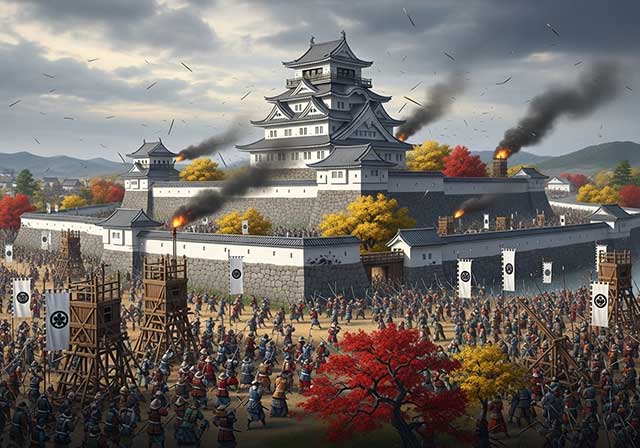
The siege of Shiroishi Castle was part of the Sekigahara campaign and took place several months before the decisive battle of Sekigahara. The daimyo of Aizu Province, Uesugi Kagekatsu, posed a serious threat to Tokugawa Ieyasu's plans to defeat the Western Coalition, and Ieyasu decided to curb his actions with the help of his northern vassals. To this end, he ordered Date Masamune to invade the province of Aizu and capture Shiroishi Castle.
-
The Second Siege of Jinju Castle
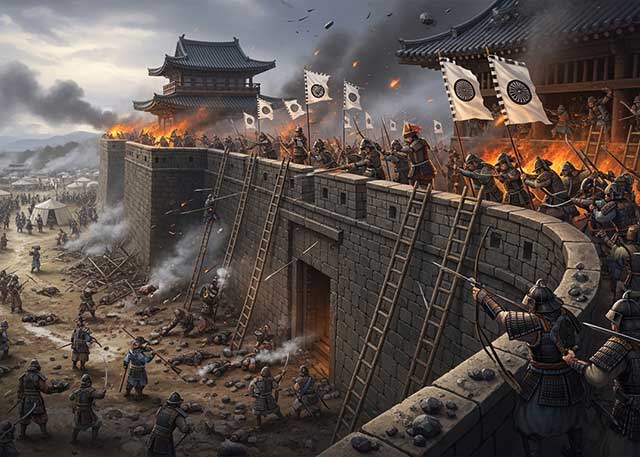
During the two Korean campaigns of the 16th century, the Japanese repeatedly had to capture enemy fortresses and defend occupied or constructed fortifications from the combined Korean and Chinese forces. Among all the operations of that time, the second siege of Jinju Castle is considered the most interesting from the point of view of siege warfare.
-
The Siege of Takamatsu Castle
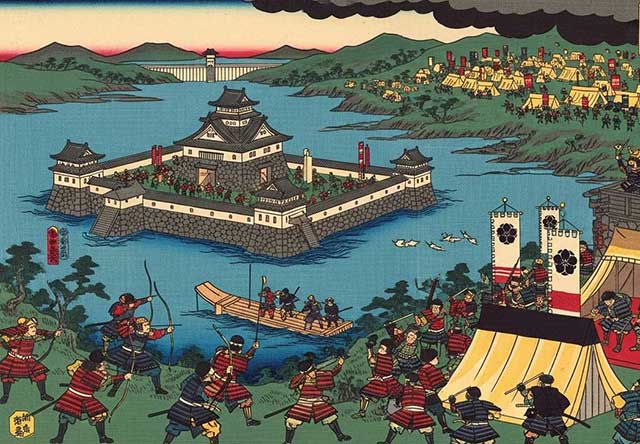
The siege of Takamatsu Castle in Bitchu Province is considered the first mizuzeme, or “water siege,” in Japanese history. Until then, such an original tactic had never been used.

